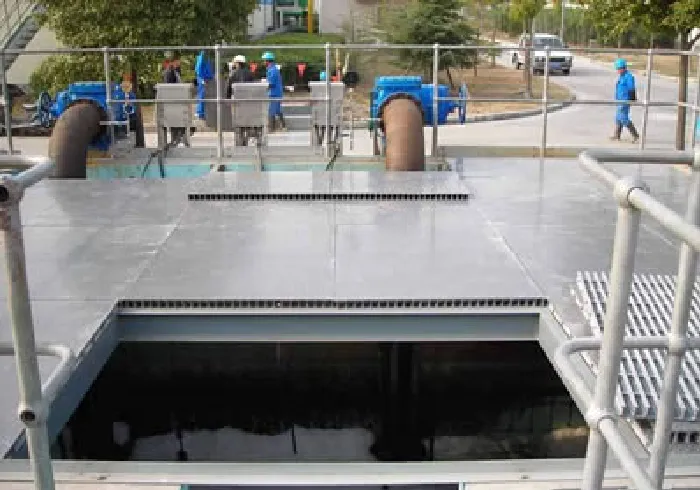loading...
- No. 9, Xingyuan South Street, Dongwaihuan Road, Zaoqiang County, Hengshui, Hebei, China
- admin@zjcomposites.com
- +86 15097380338
- Welcome to visit our website!
Floor Grating Panels for Enhanced Safety and Durability in Commercial Spaces
The Importance of Floor Grating Panels A Comprehensive Overview
Floor grating panels have emerged as a crucial element in various industrial, commercial, and residential applications. These panels, made from materials such as metal, fiberglass, and plastic, are designed not only for functional efficiency but also for safety and aesthetic appeal. In this article, we will explore the benefits, types, installation processes, and applications of floor grating panels, underscoring their significance in modern construction and design.
What are Floor Grating Panels?
Floor grating panels are flat structures that allow for the passage of light, air, and liquids while providing a stable surface for foot traffic. They are characterized by their open design, which can eliminate the build-up of water and debris, making them ideal for environments where hygiene and safety are paramount. Common materials used for these panels include steel, aluminum, and fiberglass, each offering distinct advantages based on the environment where they will be installed.
Benefits of Floor Grating Panels
1. Safety One of the primary reasons for using floor grating panels is to enhance safety. Their open design reduces slipping hazards, as liquids can drain away quickly, minimizing puddles. Additionally, the textured surface of many grating panels provides better traction underfoot.
2. Durability Many grating panels are designed to withstand heavy loads, making them suitable for warehousing, industrial settings, and outdoor environments. Materials like galvanized steel and fiberglass are resistant to corrosion and wear, extending the lifespan of the installations.
3. Versatility Floor grating panels come in various configurations and sizes, making them adaptable to different applications. They can be used in walkways, platforms, and mezzanines, and can even function as access covers for drains and pits.
4. Aesthetic Appeal While functionality is key, the appearance of grating panels cannot be overlooked. Modern designs can complement aesthetics in commercial and retail spaces, helping to create inviting areas while maintaining safety standards.
5. Cost-Effectiveness Investing in floor grating can lead to reduced maintenance costs over time. Their durability and ease of cleaning ensure that facilities require less frequent replacements or repairs, translating to a better return on investment.
Types of Floor Grating Panels
Several types of floor grating panels exist, each catering to specific needs
- Steel Grating Often used in heavy-duty applications, steel grating supports high loads and is available in different bar spacing and thicknesses.
- Fiberglass Grating This type is lightweight and resistant to corrosion, making it ideal for applications in chemical industries or marine environments.
- Plastic Grating Suitable for light-duty applications, plastic grating is easily customizable and resistant to various chemicals
.floor grating panels

Installation Process
The installation of floor grating panels requires careful planning and execution. The following steps outline a general process
1. Assessment of Needs Identify the specific requirements based on foot traffic, load capacity, and environmental conditions.
2. Choosing the Right Material Select the appropriate material for the grating panels based on durability, resistance, and cost considerations.
3. Measurement and Cutting Measure the installation area to determine the necessary size of the panels. Cutting should be done according to the manufacturer's recommendations to ensure accurate fitting.
4. Securing the Panels Panels should be securely fastened to avoid movement, often using clips, bolts, or brackets depending on the design.
5. Regular Maintenance Once installed, maintain regular inspections to ensure the grating remains free of debris and check for any signs of wear.
Applications of Floor Grating Panels
Floor grating panels are utilized across various sectors, including
- Industrial Facilities For platforms, walkways, and machinery protection, ensuring safety in high-traffic areas.
- Commercial Spaces Used in shopping centers, airports, and hospitals for both aesthetic appeal and functional performance.
- Food and Beverage Processing Essential for hygiene, allowing easy cleaning and drainage.
- Wastewater Treatment Plants Facilitating efficient drainage while supporting heavy equipment.
In conclusion, floor grating panels play a vital role in enhancing safety, durability, and functionality across various industries. Their versatility and range of materials make them suitable for countless applications, proving that these seemingly simple structures are instrumental in modern design and construction.
-
Transform Your Spaces with FRP Grating SolutionsNewsNov.04,2024
-
The Versatility and Strength of FRP RodsNewsNov.04,2024
-
The Excellence of Fiberglass Water TanksNewsNov.04,2024
-
The Benefits of FRP Grating for Your ProjectsNewsNov.04,2024
-
Elevate Your Efficiency with FRP Pressure VesselsNewsNov.04,2024
-
Welcome to the World of FRP Pressure VesselsNewsOct.12,2024
-
Unveiling the Future of Filtration: Why FRP Filter Vessels are a Game ChangerNewsOct.12,2024
